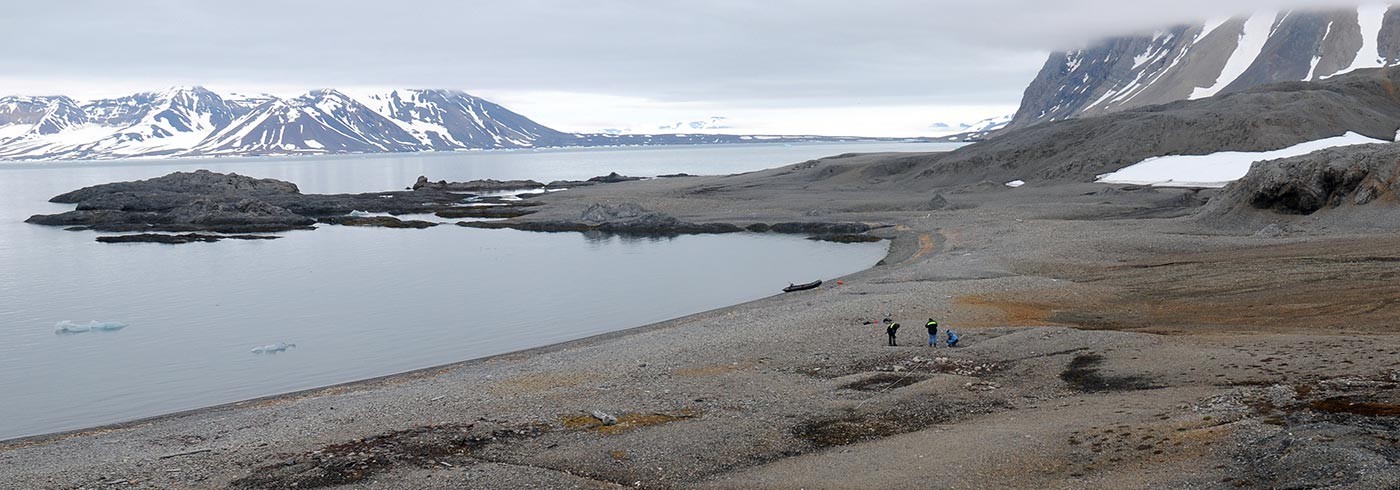Tuesday 18 July
Our next and final site was Polhem, built under the leadership of the Swedish scientist-explorer AE Nordensköld in 1872. Our main purpose was to document a cairn which the Arc-of-the-Meridian expedition used in its triangulations. While there, we also documented some general features of the site, such as the research station (the AGA stove still stands!), the pantry, a storage of lichens and what we believe might have been a sauna.
While documenting the lichens, which was placed there as a reindeer food storage, one of the historians related the tale of how during one of the storms all of the reindeer, which the research team intended to use in reaching the north pole, disappeared into the tundra. After boarding the ship again we sat down in our “study”, the bridge, and continued working in a more conventional way.
The journey back along the north coast of Spitsbergen again offered spectacular views in splendid weather – clear blue skies, no winds and a flat sea. Whales and walruses were spotted on several occasions. In the late evening we turned south at the nort-western corner of Spitsbergen and from there on the character of the journey home changed, as the boat started to roll in the heavy surf coming in from the west. Although no one on board turned sea sick, we did not have the stomach for working behind our computer screens any more.
Wednesday 19 July
After breakfast we all started packing up equipment and the food that remained. We had come further than expected during the night hours and passed through the entrance of Isfjorden at around 12 o’clock, to the sound of message alerts from our cellphones as we came within the coverage of the 4G mast at Barentsburg. Two hours later we reached the dock at Longyearbyen. The rest of the day the expedition members spent on moving equipment and leftover foods to various locations in Longyearbyen. We ended the day with a final dinner, satisfied with what we all agree has been a very successful expedition.

